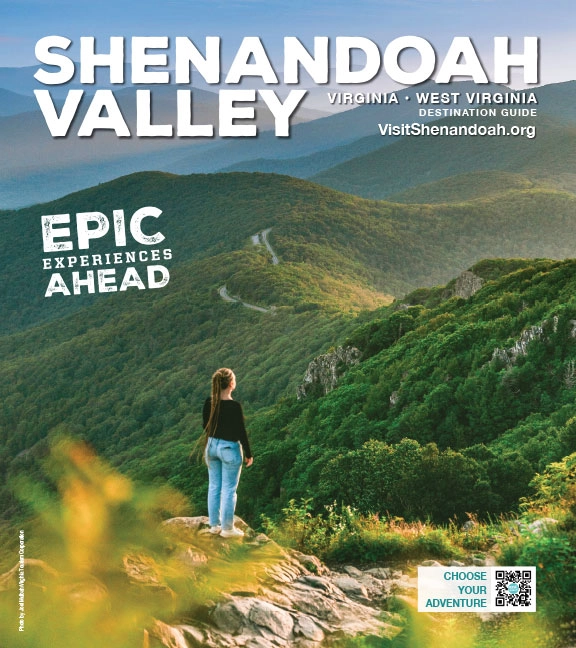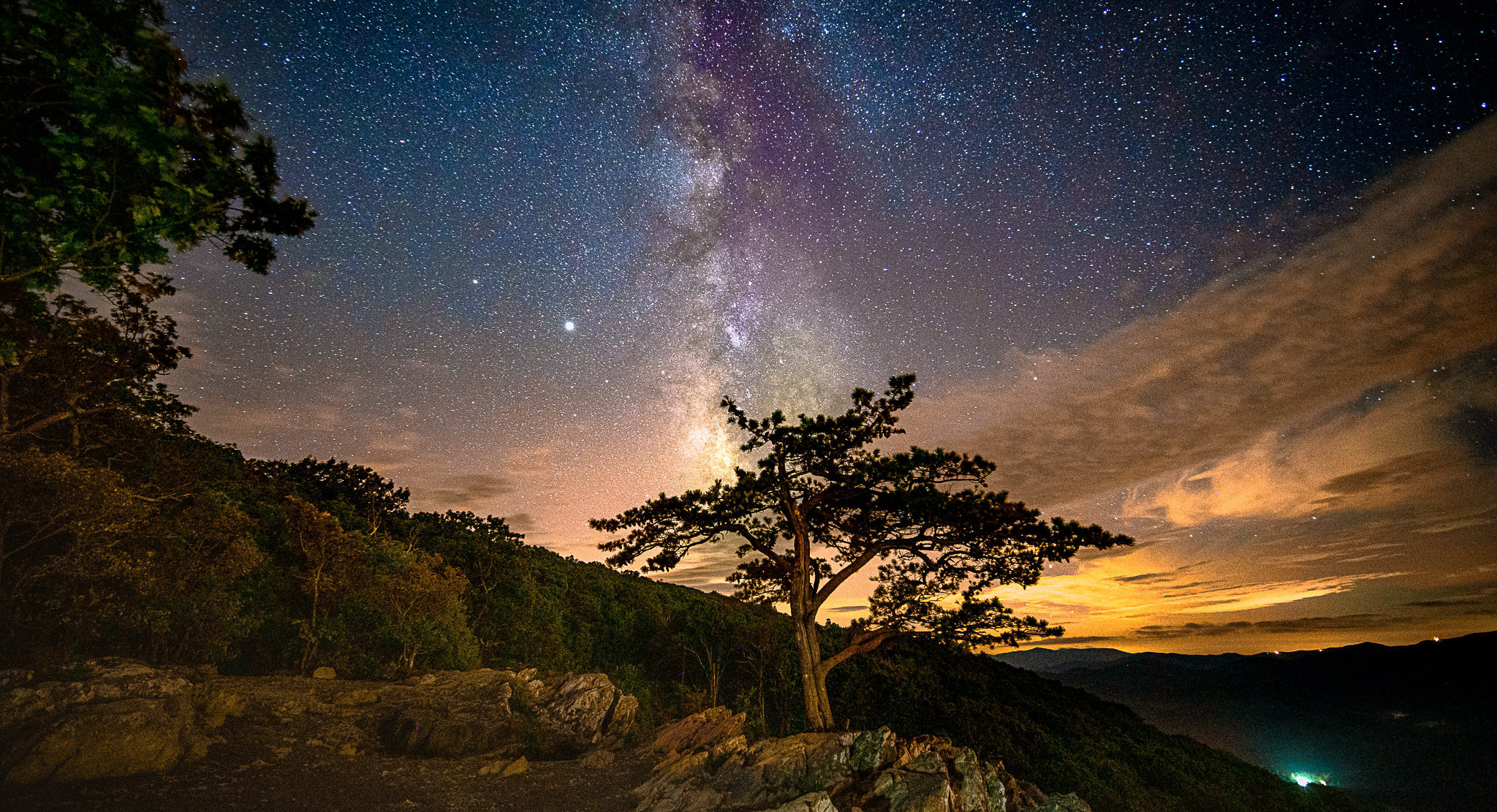Stars are a wonder, so dreamy and unknowable, mesmerizing and magical. Except they’re not, of course. We know that stars are not star-shaped lights in the sky, but raging balls of gas of various temperatures. The bluer the star, the hotter it burns. Yet, there is still something fantastical and romantic about them.
When was the last time you looked up into the clear night sky and connected the stars? From the dippers to your astrological sign, there is much to behold, including the planets, the moon, and meteors. The best places to stargaze are the darkest. In the Shenandoah Valley, there are a few places from which you can enjoy an ideal evening of stargazing. For help identifying what you see, check out spaceplace.nasa.gov for a Star Finder.
Virginia
In 2021 Natural Bridge State Park received recognition as an official International Dark Sky Park by the International Dark-Sky Association (IDSA). It is one of five such recognized parks in Virginia. In the application for the designation, the sky was compared to other natural resources: “The night sky, like forests, wildlife, soils, and water, is a natural resource that should be protected for future generations to experience and enjoy.” We couldn’t agree more!
View this post on Instagram
Natural Bridge State Park in Natural Bridge is joined by Sky Meadows State Park in Delaplane as Dark Sky Parks in the Shenandoah Valley. Both offer night sky programming.
Upcoming at Natural Bridge State Park
- Self-Guided Dark Sky Nights every Tuesday from 8 to 11 p.m.
- July 13: Super Moon from 9 to 11 p.m.
- August 12: Perseid Meteor Shower Watch from 9 to 11 p.m.
- August 27: New Moon from 9 to 11 p.m.
- September 10: Full Corn Moon from 9 to 11 p.m.
- September 24: Milky Way and Equinox Celebration from 9 to 11 p.m.
- October 8 and 22: Halloween Celebration from 8 to 10 p.m.
Upcoming at Sky Meadows State Park
- Astronomy for Everyone the last Saturday of each month starting at dusk
Big Meadows in Shenandoah National Park sits at 3,548 feet in elevation while Stanley – down below in the Shenandoah Valley – comes in at 1,093 feet. Those 2,000+ feet make a difference when considering light at night. For many, Big Meadows is an ideal place to observe and photograph the night sky. Amateur astronomers offer educational programming select Fridays at Mile 51 outside the Rapidan Camp Gate, and it’s free. See the chart of 2022 celestial topics below.
Note that access to Big Meadows requires paid entry to Shenandoah National Park.
View this post on Instagram
The Blue Ridge Parkway has excellent overlooks; pick one that isn’t right over top of a city or town in the Valley below. Ravens Roost Overlook at MP 10.7 is a good one to consider (judging from the header photo, eh?). It’s not a hard hike or anything too labor intensive, so give it a go.
What did Thomas Jefferson think of the night sky? He called it “the most sublime of all sciences.” Hear from TJ himself (err, kind of) …
Enjoy the view from Jefferson’s south lawn at Poplar Forest in Forest on September 10 from 7:30 to 9 p.m. You’ll be joined by Trish Cerulli, the outreach coordinator for Belk Astronomical Observatory at the Claytor Nature Study Center at the University of Lynchburg. Tickets are $10 each and available here.
West Virginia
With low population and equally low light pollution in West Virginia, it’s a no-brainer destination for stargazing. “If you want to know what the night looked like in the good ol’ days, come to West Virginia where the sky can grow brilliant with stars,” said astronomer David Buhrman of West Virginia Sky Tours.
Capon Springs and Farms in High View, WV is a great place to set up your telescope and watch the night sky. Capon Springs is a superb all-inclusive family resort reflective of a slower pace of life, which means there aren’t many bells, whistles, or … lights.
For a remote location from which to enjoy the brightest of stars in the darkest portions of sky, try Spruce Knob, the highest point in West Virginia (4,863 feet) and just north of Monterrey, Virginia. If you want to take part in a night sky getaway, check out the Almost Heaven Star Party at Spruce Knob Mountain Center. It’s a long weekend of daytime mountain excursions and nighttime astronomy fun. While the 2022 event is already sold out (whomp), you can save the date for 2023. It’s an annual August event.
View this post on Instagram
“For my part, I know nothing with any certainty, but the sight of the stars makes me dream.” – Vincent van Gogh
Header image of Ravens Roost at MP 10.7 on the Blue Ridge Parkway by Rachel DeBusk @racheldebuskphoto and courtesy of Virginia Tourism Corporation.





